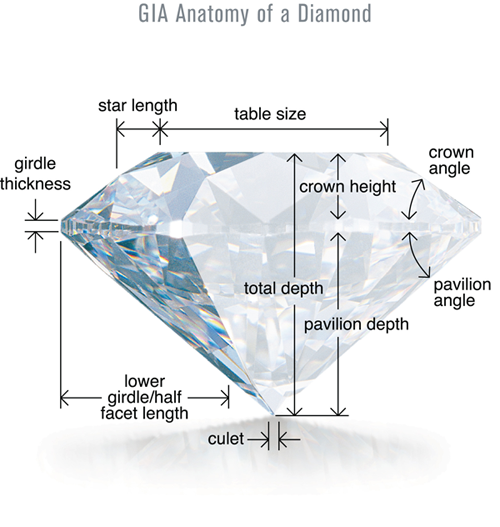
The qualities that make a diamond so visually appealing and beautiful are sparkle and brilliance. While the 4c’s. are very important, the quality of a diamond’s Cut in particular is very important to creating brilliance, sparkle, and flashes of fire.
Brightness and Contrast in a well-cut Diamond
Brilliance consists of two components, brightness and contrast. A well-cut diamond. will have brightness. As you move closer to the diamond you will see its contrast pattern become more apparent (areas of light and dark which compliment each other). A diamond that is cut too deep or too shallow has a tendency to allow light to leak out the back of the stone. Diffused lighting does not produce fire or scintillation so it’s good for judging color and clarity, and visible inclusions that may be masked by the lighting. If you’re analyzing color, be sure to keep a white wall in front of you, since a diamond picks up and reflects colors around it. Diamonds that are bright return light from their surroundings back to the viewer.
Fire – Highly desirable optical feature in a diamond
Scintillation – Contrast, brightness, and fire
Polish – How light is able to pass through a diamond
Symmetry – Exactness of the shape and arrangement of facets
Symmetry can be an important aspect of your diamond. Symmetry means that there is an exact reflection of form on the diamond’s shape and arrangement. Symmetry affects the diamond cut and can have an effect on its value and brilliance as well. Symmetry is the overall look of the diamond.
According to the AGS, with an ideally cut diamond, the stone must be placed at precise angles and contain precise proportions. This placement normally ensures an ideal balance between the maximum amount of brilliance and dispersion of light. Any divergence from these proportions will disturb the even distribution and dispersion of light within the diamond – this normally results in a loss of sparkle. However, the GIA (Gemological Institute of America) does rate symmetry and there are seven ratings from Extremely Poor to Excellent. You should be fine with a symmetry rating ranging from Good to Excellent. It is common to have a price difference for better symmetry grading.
